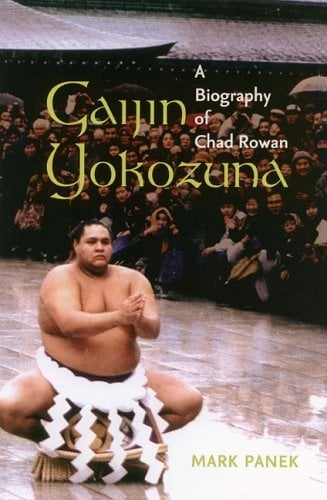Gaijin Yokozuna
At the age of eighteen, Chad Rowan left his home in rural Hawai'i for Tokyo with visions of becoming a star athlete in Japan's national sport, sumo. But upon his arrival he was shocked less by the city crowds and the winter cold than by having to scr...
Read more
At the age of eighteen, Chad Rowan left his home in rural Hawai'i for Tokyo with visions of becoming a star athlete in Japan's national sport, sumo. But upon his arrival he was shocked less by the city crowds and the winter cold than by having to scrub toilets and answer to fifteen-year-olds who had preceded him at the sumo beya. Rowan spoke no Japanese. Of Japanese culture, he knew only what little his father, a former tour bus driver in Hawai'i, had been able to tell him as they drove to the airport. And he had never before set foot in a sumo ring. Five years later, against the backdrop of rising U.S.–Japan economic tension, Rowan became the first gaijin (non-Japanese) to advance to sumo's top rank, yokozuna. His historic promotion was more a cultural accomplishment than an athletic one, since yokozuna are expected to embody highly prized Japanese values such as hard work, patience, strength, and hinkaku, a special kind of dignity thought to be available only to Japanese. He was promoted ahead of his two main rivals, the brothers Koji and Masaru Hanada, who had been raised in the sumo beya run by their father, the former sumo great Takanohana I. Perhaps the defining moment of the gaijin's unique success occurred at the 1998 Nagano Olympics, when Rowan, chosen to personify "Japanese" to one of the largest television audiences in history, performed a sacred sumo ritual at the opening ceremony. Gaijin Yokozuna chronicles the events leading to that improbable scene at Nagano and beyond, tracing Rowan's life from his Hawai'i upbringing to his 2001 retirement ceremony. Along the way it briefly examines the careers of two Hawai'i-born sumotori who paved the way for Rowan, Jesse Kuhaulua (Takamiyama) and Salevaa Atisanoe (Konishiki). The author shares stories from family members, coaches, friends, fellow sumo competitors, and of course Rowan himself, whom he accompanied on three Japan-wide exhibition tours. The work is further informed by volumes of secondary source material on sumo, Japanese culture, and local Hawai'i culture.
Less
